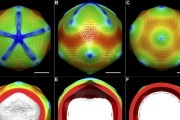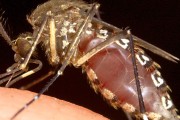 It emerges that phage viruses, which infect bacteria, use small peptides to communicate with each other. This observation of intercellular communication also reveals how viruses make a key developmental decision.
It emerges that phage viruses, which infect bacteria, use small peptides to communicate with each other. This observation of intercellular communication also reveals how viruses make a key developmental decision.
When a major decision looms, peo¬ple often seek advice from friends or relatives. Erez et al.1 reveal on page 488 that bacterium-targeting viruses known as phages also show a collaborative aspect to a developmental decision-making process. In this case, intercellular commu¬nication occurs through the use of a viral peptide. Intercellular molecular communi¬cation between viruses hadn’t been observed before, and this study illuminates a previously unknown mechanism of viral action.
After injecting the phage genome into a bac¬terial host cell, most phages have two life-cycle options. The phage can enter the lytic devel¬opmental pathway and eventually destroy its bacterial host in a process that will release doz¬ens of new phage particles into the environ¬ment. Alternatively, it can follow the pathway of lysogeny, sparing the host cell, protecting it from subsequent phage infection, and integrat¬ing the phage genome into the host genome2. Depending on the prevailing conditions, either lytic or lysogenic phage development might be more advantageous for the survival of a phage population.
Full text:













